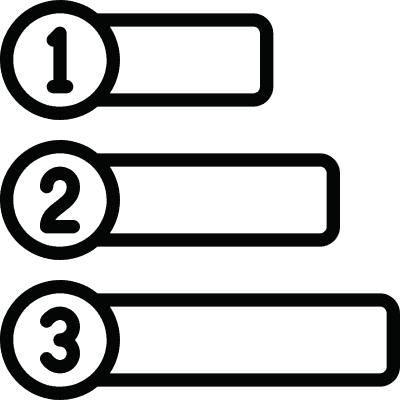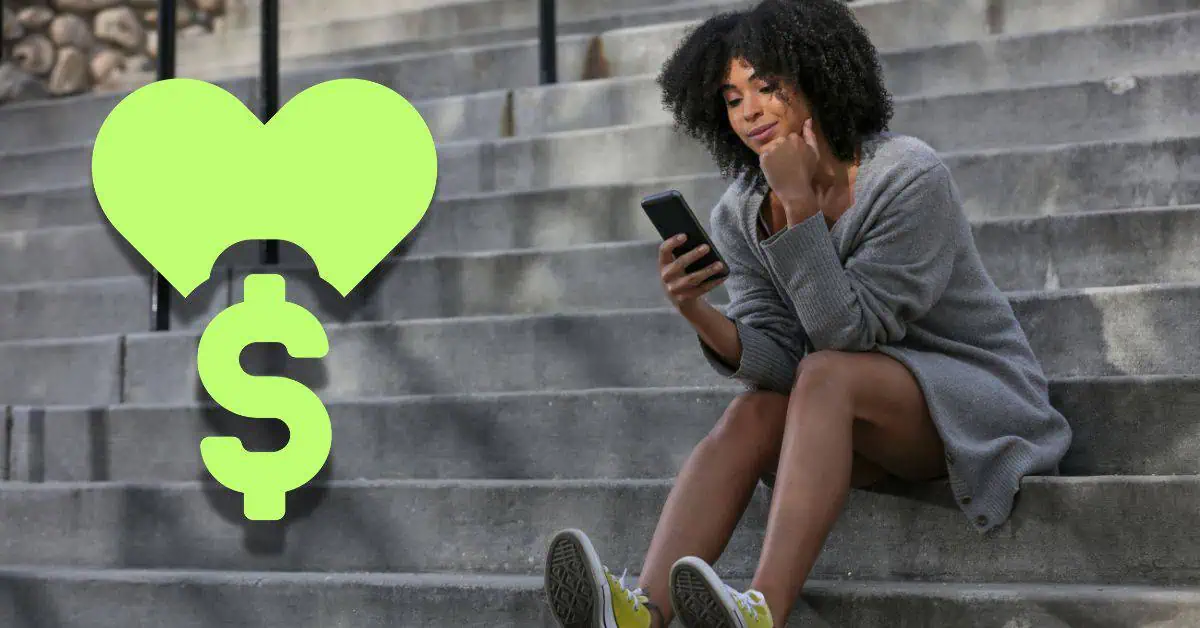People lose their minds for free stuff. Every time I am in a place where there are samples on offer, they disappear in record time. I was in Starbucks this week, and they had a tray with little Pumpkin Spice cold brew coffees, and that tray was emptied in under a minute. “Are these free?” customers would ask, and when told “yes,” their eyes would light up.
Why am I talking about free samples? Because it extends to almost everything in life, which makes sense. Who doesn’t want something for nothing? And that includes dating apps—some users will pay for a premium membership, but the freemium models are the most popular for good reason.
Almost every dating app on the market uses a freemium model, which gives users free access to match and mingle. It’s obvious why the model is so popular—it’s free! If you can do everything you need to without upgrading to a subscription, why wouldn’t you?
The increasing popularity of freemium models across different industries hasn’t gone unnoticed, but we are going to concentrate on how it’s changing the online dating experience. We’ll get into how freemium models are reshaping dating apps; like how they impact user experience, the features, monetization, and how paid vs. free features affect customer satisfaction and dating success!
What is the Freemium Model?
The freemium model is basically to give users a sample of the basic functionality for free while reserving special features for those who are willing to pay. This means you can swipe, message, and explore potential matches without paying anything upfront—or ever.
But if you want to unlock certain perks—like seeing who liked you or boosting your profile for more visibility—that’s where the paid features come in. It’s a clever way to reel people in and get them to consider paying for a premium membership.

Definition of Freemium
The freemium business model gives users free access to core services, but advanced features are locked behind a paywall. On dating apps, this means you can browse profiles, swipe, and message without spending a penny.
But if you want the perks, like advanced filtering, read receipts, seeing who swiped on you, or getting a boost in search results, you’ll have to subscribe! Platforms want to generate enough appeal in the free version to make people at least curious about the extra features.
Below are the popular dating apps that have freemium models (they also have premium options):

History of Freemium in Dating Apps
In the olden days, dating apps weren’t free. Platforms like eharmony and Match.com built their model around paid subscriptions—users paid a monthly fee for access to messaging, profiles, and match-making features. This worked well when online dating was relatively new, and people were willing to pay for what was seen as a valuable service.
As mobile apps and casual dating became more mainstream, things shifted. Tinder, with its swipe interface, brought a new approach when it launched in 2012, making dating feel spontaneous and accessible. Being able to browse and connect without having to pay upfront attracted a younger crowd, making dating apps way more casual. The freemium model made dating apps available to a bigger audience, with paid features for those who wanted a more tailored experience.
The shift not only drew in more users but also redefined online dating as something less serious and way more approachable. Nowadays, while people still opt to pay for extras, the freemium model is firmly entrenched, making it the dominant approach in dating apps.
Core Features of Freemium Dating Apps
Freemium dating apps hook users by giving out the basics for free, a structure that encourages a huge influx of users who can set up profiles and start interacting with others STAT, which increases overall engagement. The larger the pool of users, the better the odds of finding someone to connect with—a win-win for both users and the app.

Free Access to Basic Features
The majority of dating apps let users create profiles, swipe, and send messages without charging anything upfront, and free access makes it easy for anyone to join, resulting in a big and active user base. Tinder is a great example of this—users can swipe left or right and match with others without spending anything.
Other apps like Bumble, OkCupid, and Hinge follow the same model, allowing free swiping and messaging with mutual matches to keep users engaged while offering up extra features to those who are willing to pay for them.
Below are the dating apps that let you swipe and message with mutual matches for free:
- Tinder
- Bumble
- Hinge
- OkCupid
- Plenty of Fish
- Badoo
- Coffee Meets Bagel
- Zoosk
- Happn

Premium Features for Paid Users
Freemium dating apps let you swipe and chat for free, but if you really want to level up your chances for compatible matches, the premium upgrades are where it’s all happening. Advanced features give users a serious advantage in getting noticed and making the most of the app.
Unlimited Swipes
On most apps, you’ll hit a daily limit if you’re using the freemium version. But with premium memberships, you can swipe under your finger hurts, opening up more opportunities to match with people.
Profile Boosting
Paid users can get their profile seen by more people in a short window. Your profile is placed front and center, making it much more likely to catch someone’s interest. It’s kind of like a VIP pass that increases your visibility during peak hours.
Super Likes
Instead of just blending in with the crowd, a Super Like makes sure the other person knows you’re really interested. It sends a notification to the user, telling them you’ve doled out a “like” on steroids.
Advanced Filters
Premium users get access to super detailed filters so they can narrow down matches based on specifics like appearance, interests, lifestyle habits, or political views. This helps cut down the time spent swiping through profiles that don’t match what you’re looking for.
While most dating apps have some form of premium features, the following are the most popular:
Hinge Preferred Membership
Unlocks unlimited likes, the ability to filter matches by criteria like height and education, and see who already liked you.
Badoo Premium
Gives you access to advanced filters, sees who liked your profile, and sends direct messages to popular users.
Zoosk Premium
Has unlimited messaging, profile boosts, and smart picks based on your behavior on the app.
Plenty of Fish (POF) Upgraded Membership
Allows you to send more messages, see who’s viewed your profile, and have your messages read first by potential matches.
Happn Premium
Offers an “invisible” mode for browsing without being seen, unlimited likes, and the ability to see who liked you first.

Tiered Pricing Structures
Dating apps don’t just stop at a single paid tier, no way! They know that different users have different levels of commitment, so they have tiered pricing to give people different options based on how much they’re willing or want to spend. Each tier adds more perks, increasing the value as you go up the tier.
The psychology behind this structure is simple: once users see what the basic upgrade can do for them, they’re tempted to unlock more features. It creates a progression where you feel like just a tiny step up will improve your chances. Plus, apps design these tiers to appeal to different needs—casual users can stick with the basic premium tier, while serious daters can opt for the top level.
Here are a few examples of tiered pricing on mainstream dating apps:
Tinder
Tinder Plus: Unlimited swipes, passport to swipe globally, no ads, and one free boost per month.
Tinder Gold: Includes all Plus features plus seeing who likes you before you swipe, top picks, and more profile boosts.
Tinder Platinum: Adds messaging before matching, priority likes (your likes are shown first), and more advanced perks.
Bumble
Bumble Boost: Lets you see who swiped right on you, rematch with expired connections, and extend matches.
Bumble Premium: Adds travel mode, unlimited swipes, advanced filters, and incognito mode for browsing anonymously.
OkCupid
A-List Basic: Browse profiles without ads, see who liked you, and get advanced search filters.
A-List Premium: Includes all Basic features, along with higher profile visibility and the ability to send messages before matching.
Hinge
Preferred Membership: Grants unlimited likes, advanced filters, and the ability to see who liked your profile before you match.
Zoosk
Zoosk Premium: Unlocks messaging, premium matches, and boosts your profile visibility for a set time.
By offering different levels, apps keep users occupied and always thinking about upgrading. Even if it’s just for a few more likes or for higher visibility, tiered pricing gives you options.
How Freemium Models Influence User Behavior
Freemium dating apps are carefully designed to keep users busy and encourage them to upgrade. By giving just enough for free while strategically limiting beneficial features, dating apps fashion a mix of fun, frustration, and temptation that fuels user behavior.
The way these models are set up plays with psychology, subtly urging users to spend time on the app and, hopefully, spend money, too!

Gamification and Engagement
Freemium apps rely heavily on gamification to keep users returning to platforms. It could be with a certain number of daily swipes or limited-time features—they generate a cycle of engagement that feels like playing a game rather than looking for a date.
Tinder and Bumble allow users a set number of swipes each day, which resets every 24 hours. This feature encourages users to log in daily to take full advantage of their free opportunities to find a match. By making it feel like there’s always one more profile to check or another chance around the corner, these apps keep users fixated and engaged.
Daily free swipes and limited likes build a habit-forming loop. It’s comparable to playing a slot machine—sometimes you get a match, sometimes you don’t. But the unpredictability, combined with the ease of swiping, turns the entire process into something addictive. Over time, this engagement translates into more active users, which means more data and more matches for the app to display, all without the user having to pay.

The Paywall Temptation
Freemium dating apps also strategically introduce paywalls to increase the itch to upgrade. Once a user gets comfy with the basic features, they butt up against limitations that make it feel like it’s missing something or could be better.
This is where the paywalls come in—it pushes users toward a paid upgrade. Running out of swipes is a common example—Tinder, Bumble, and others will let users swipe, but once they’ve hit their daily limit, the only way to keep going is to either wait for a reset or pay to unlock unlimited swipes.
Bumble’s “rematch” feature is another great example. If you miss out on a match—maybe someone swiped on you but your connection expired—you can pay to get another shot at that person. This feature plays into FOMO (the fear of missing out), a powerful motivator. Hinge does something similar, limiting the number of likes free users can send each day, producing a desire for control and access, which is only available via premium subscriptions.
Other apps like OkCupid will tease users by showing them who liked their profile but keep the exact details hidden unless they pay up. It’s the digital equivalent of a dangling carrot—seeing blurred profiles or getting notifications about people interested in you but not being able to interact with them unless you upgrade.

The Illusion of Choice
Freemium models also sneakily manipulate the illusion of choice. Yes, users can feel they have access to endless matches, but the reality is that these apps limit what’s available to free users. The limitations might not be super obvious at first, but over time, users may realize that the profiles they’re seeing are fewer and less specific to their preferences.
Hinge limits the number of likes for free users—you can scroll through profiles, but when you run out of likes, you’re faced with the choice of either waiting until the next day or paying for more. This brings about a sense of scarcity that prods people toward upgrading. It’s not that there aren’t more matches available—it’s just that you’re not allowed to access them without a subscription. This tactic causes the illusion that if you upgrade, you’ll suddenly unlock a whole new pool of potential matches, even though the profiles are technically there the whole time!
Other apps, like Tinder, employ a similar strategy with “Top Picks.” These are curated dating profiles that the algorithm thinks are the best suited for the user, but free users only get a sprinkling of these a day. To see more, users have to pay. It’s the same tactic: show just enough to generate interest but hold back the full experience unless someone upgrades.
These limitations play into the idea that you’re missing out on better or more relevant matches by remaining with the free tier. By establishing a sense of artificial scarcity, freemium apps guide users toward paid subscriptions.
The Impact on User Experience
Freemium models are designed to attract a large audience by making the basic features available to everyone, but the gap between free and premium users becomes quickly apparent! This distinction shapes the overall satisfaction and the likelihood of users upgrading for a better dating experience.

Freemium vs. Paid Experience
Free users can swipe, match, and message with mutual matches, but then they bump up against limits that restrict how much they can engage. But premium users get access to perks that streamline the process, like seeing who has already shown interest in them.
Tinder Gold, for example, has the “Likes You” feature, giving paying users an immediate head start over others who are left in the dark. Bumble’s Boost and Premium features mean users can bypass daily limits and access tools like travel mode to widen their search area.
This puts into place a clear divide where paying members get more visibility—sure, both free and premium users can interact and match, but the upgraded features make it way easier for paid members to optimize their profiles and connections.

Advantages for Premium Users
Premium subscriptions grant access to features that were built to increase the likelihood of connecting with matches faster. Tinder Platinum includes messaging prior to matching, while profile boosts give users greater exposure during peak swiping times.
Over on Bumble, users who upgrade to Premium can filter matches based on super detailed criteria, narrowing down their search to the most relevant and compatible dating profiles.
Hinge’s premium membership has features that make it easier for users to find more compatible matches by using advanced filters, like preferences around habits or lifestyles. These features are really helpful for premium users navigating through profiles faster.

Frustration Among Free Users
Make no mistake—free users will hit restrictions that disrupt or halt their momentum, like running out of daily swipes or not having access to advanced filters. This can put users at a disadvantage, especially when they notice that premium users have more control over who they match with and when. On Hinge, the daily cap on likes can leave free users feeling they are missing out on better opportunities—the dreaded FOMO.
As time passes, restrictions can make free users feel like they’re getting the short end of the stick, which will prob downgrade their overall satisfaction with the app.
Monetization Strategies in Freemium Dating Apps
Freemium dating apps draw users in by making the basics free, but the real money comes from those who want more than the bare-bones version. There are lots of ways these apps still get money out of users without them having to pay a monthly subscription, but not locking them out of the freemium model.

Subscription-Based Models
Obviously, the main revenue stream for dating apps is subscriptions. Users who want the extra features can subscribe to plans that unlock all kinds of perks. Apps like Tinder, Bumble, and Hinge rely heavily on this model.
Tinder’s Gold and Platinum plans, for instance, have different levels of control and visibility, while Bumble’s Boost lets users bypass most of the limitations that free users encounter,
This approach works because once users get used to the free features, they may feel encouraged to commit to a premium plan if they think it will improve their chances of success. Auto-renewals almost always accompany subscriptions, which help dating apps keep a steady revenue stream. FYI: Read the terms & conditions if you do upgrade to find out if your plan automatically renews when your subscription is up!

Microtransactions and Pay-Per-Feature
Not everyone wants to commit to a subscription, so dating apps also make some bank by offering one-time, in-app purchases. This could be a “Super Like” on Tinder or Bumble, which gives focused attention to someone you’re interested in. Other apps, like Hinge, let users buy “Roses” to show their interest in someone without having to buy a full subscription.
This kind of flexibility means that users can pick and choose what they’re willing to pay for, which takes commitment out of the equation. It also gives apps another way to make money from people who don’t want to sign up for a monthly plan.

Ads in Free Versions
For users who stick with the free version, ads are a huge source of revenue for dating apps. Tinder and Badoo regularly show ads between swipes or interactions. Some apps even let users watch ads in exchange for bonuses, like extra swipes or likes. This is a way for apps to keep the free features free while still making money from those users.
Yes, the ads can interrupt the experience, but for the most part, they’re quick (on Tinder, you just swipe them away), and they’re a main part of how free apps make revenue and sustain user base growth.
How Freemium Models Are Shaping the Dating App Industry
Freemium models have completely reshaped how dating apps work, changing the way users interact with platforms and how these apps generate revenue. By offering free services with optional paid upgrades, dating apps can reach a big audience while still making money through premium features.
This approach has had a profound impact on the industry, influencing everything from the size of the user base to how apps compete with one another and the rise of niche markets!

Expansion of the User Base
Freemium models have opened the floodgates to a wider pool of users who are able to use dating services without any cost. A strategy like this invites users who may be hesitant to commit to paid services, particularly the younger generations and casual daters. Apps like Tinder and Bumble have flourished using this model and have attracted millions of users globally.
The freemium approach is the main selling point in appealing to casual users. While they may not instantly pay for premium services, they are part of the app’s ecosystem. Over time, free users could upgrade to premium features as they crave more control over their experience. By keeping barriers to entry low, dating apps make sure they have a diverse and busy community of users.
Freemium apps don’t just attract individuals who are already actively looking for relationships; they also draw in those who might be just curious about online dating. With a free option available, there’s no risk in trying out the platform.
It’s an easy and non-committal way for users to swipe without any sort of financial obligation, but the presence of beneficial premium features usually motivates users to consider upgrading over time.

Increased Competition Among Apps
The widespread use of freemium models has pushed dating apps into a much more competitive space. Since most platforms have pretty much the same free features, companies are pushed to innovate to get users’ attention and keep them using the platform.
This has resulted in an almost constant evolution of both free and premium offerings, as apps are always trying to distinguish themselves from one another.
Bumble, for instance, made its mark by not just operating as a dating app, but also as a platform for finding platonic relationships and professional connections.
Its Bumble BFF and Bumble Bizz features extend the app’s functionality past romance, making it more versatile. The added features give Bumble an advantage over competitors by expanding its appeal to a bigger audience.
Other apps, like Tinder, have had to respond by introducing more premium features, like Passport, which lets users swipe in other locations, making them more attractive to users looking for extra flexibility.
This level of competition has also spurred innovations that directly improve the user experience, particularly in how users are matched. A lot of apps now use advanced algorithms to improve the relevance of matches, as seen with Hinge, which uses user feedback to refine future suggestions.
The need to constantly improve these algorithms and features keeps the marketplace busy and always evolving.

Emergence of Niche Dating Apps
Since large-scale dating platforms control most of the conversation, freemium models have also spurred on the growth of niche dating apps, which target specific communities, demographics, or interests for a more tailored experience that caters to particular user groups.
By giving free access to basic features, niche apps can build a loyal following while also offering premium upgrades for users looking for extra tools.
Coffee Meets Bagel is an example of how niche apps are capitalizing on the freemium model. By curating daily matches, the app offers an intentional approach to dating, which attracts users looking for serious connections. Premium features like activity reports and access to extra matches are incentives for users to pay for an upgraded experience.
Niche platforms are gaining ground by concentrating on quality over quantity so users can find connections that are more meaningful compared to the superficial swiping culture on mainstream apps.
Niche apps also tend to build a sense of community, which adds better engagement for users. Most niche platforms incorporate community-based features, like forums or group events, where users can interact with people beyond their romantic matches.
This establishes a strong user base and encourages participation within the app, even for those who may not be actively looking for a relationship.
User Attitudes Toward Freemium Models
The freemium model is now the standard in the dating app world, giving users basic access for free while charging for extra features. This model has molded how users think about these platforms, with some who are okay with the free tier and others who don’t like it when they hit limitations. How do users react to this structure, and how does it impact their behavior? Let’s find out!

Acceptance of Freemium as the Norm
Users have come to expect that most dating apps will have a free version. It’s the baseline for entry, and people are generally comfortable with the idea of using an app for free, at least at the offset.
Most users see it as a risk-free way to try it out before deciding whether they want to pay for additional features. The free tier is enough for users to swipe, match, and chat, so it’s not exactly a surprise that most view it as the standard way to use dating apps.
For a lot of people, paying for premium features is seen as an optional extra rather than a necessity. Users know they can upgrade if they want perks like more swipes, seeing who’s liked them, or boosting their profile, but they don’t feel forced into it right away.
Tinder Gold or Bumble Premium are examples where users can pay for added convenience, but many stay with the free version and only upgrade if and when they feel it’s actually worth it. The freemium model, in this sense, is a balanced experience for both free and paying users, with each side feeling like they’re getting value.

Resistance to Paywalls
While freemium models are accepted as the norm, paywalls tend to cause frustration. Some users think that the limitations placed on free accounts are only designed to sway them into paying for access.
Features like limited swipes per day or being unable to see who has liked your profile can turn into dissatisfaction, especially when users feel they are being held back from potential matches unless they upgrade.
Some have likened this to feeling trapped—free users think that they aren’t getting the full experience unless they pay. Dating apps that limit the number of daily likes for free users or cap the number of free swipes have gotten backlash from users who believe they shouldn’t have to pay to get a fair shot at finding a match.
For some, these restrictions are seen as a barrier and not a feature, so there are mixed feelings about the freemium model.

Paying for Success
Another common attitude toward freemium dating apps is the perception that those who pay are basically “paying for success.” Premium users gain access to features like profile boosts, unlimited swipes, and advanced filtering options, which gives them an advantage over free users.
This causes divisiveness about whether paying for premium features actually increases the chances of finding a match or if it’s just a way to get past the restrictions of the free tier.
And then there are the users who wonder if upgrading really gets better results. There’s a belief among some that premium users get more visibility, quicker matches, and ultimately a better experience.
However, there’s also skepticism about whether paying for premium features guarantees more compatible connections. There are users who report better outcomes after upgrading, but others feel that success in online dating depends more on luck, timing, and personal compatibility than on which features are unlocked.
This raises an interesting debate about fairness. Does paying for a premium membership give users an unfair advantage, or does it simply improve what’s already available to everyone? Free users sometimes feel that they’re missing out on better matches because they can’t pay to improve their chances, which fosters a sense of inequity within the app’s community.
User attitudes toward freemium models in dating apps run the gamut—most accept and expect the free tier as the norm, while others get frustrated by the paywalls and limitations. The idea of paying for success is also debated—some see it as a way to get an edge, and others question whether it’s really worth the cost.
The Future of Freemium Dating Apps
Freemium dating apps aren’t going anywhere, and they’re only going to get more creative and complex as time goes on. With tech moving forward at whiplash speed, apps are likely to become even more interactive and smart, adapting to users’ behaviors and preferences in ways we’re just starting to see.

Evolution of Premium Features
Dating apps will need to stay fresh to keep people interested, and premium features are the best way to do it. One area that’s likely to take off is AI-powered matchmaking.
Right now, AI is already being used to recommend matches based on your swipes and preferences, but it’s going to get a lot more personal. There will be an algorithm that not only picks up on who you like but also how you interact with others, helping you connect with people on a better level.
Another exciting development could be virtual reality dating. Apps are starting to explore VR, where users can go on virtual dates in fully immersive settings that look and feel realistic. It goes without saying that these kinds of innovations will likely be exclusive to premium tiers (plus, you’ll need to buy a VR headset), giving paying users access to cutting-edge tech.

Shifts in User Expectations
People who currently use dating apps know what they expect, and that’s going to push apps to do better. Free users are frustrated with things as they are now and don’t think they should have to pay up.
In the future, users may start expecting more value from the free tier—they won’t just want access to basic features; they’ll want something that makes them feel like they aren’t being bullied into upgrading.
As more people demand a better balance between free and premium features, apps might need to get creative about what they give away for free and what they reserve for paying users. It wouldn’t be surprising if we started seeing some features, like unlimited messaging or advanced filters, making their way into the free version to keep users happy.

Increasing Customization and Personalization
Dating apps have already started to feel more personalized, and this trend is going to keep going. Users are starting to expect experiences that feel tailor-made for them, and apps like Hinge, with its voice prompts and creative profile options, are ahead of the curve in giving users the tools to show off their personalities.
In the future, AI-driven personalization is going to rule the roost—dating apps won’t just suggest matches; they’ll also help you improve your profile, recommend conversation starters based on your chat history, or even give you the best date spots based on common interests.
The idea is that dating apps will feel less like generic swiping platforms and more like personalized dating assistants.
Freemium Models: Freebies or Frustration?
Freemium dating apps are great; we cannot argue with that! You can sign up and get started without paying a cent. But, as with everything, a free ride comes with limitations, and users have to decide if premium features are worth the price.
Here’s a quick recap of how freemium models have changed how we date online:
Accessible For All
Freemium models have opened up access—anyone can use dating apps without an immediate financial commitment.
A Larger and More Diverse Dating Pool
Since users can use them for free, a way more diverse group of people now populate the apps, from serious daters to casual users.
Limits for Free Users
Free accounts can feel restrictive, with swipe limits, fewer matches, and less profile visibility, whereas premium users get advanced features like unlimited swiping, messaging before matching, and beneficial profile boosts.
Evolution of Paid Features
AI-driven matchmaking (which is already being used), personalized profiles, and even virtual reality (VR) dating are possibly the next big things on the agenda for paying users, making premium tiers increasingly tempting.

Final Thoughts
Freemium dating apps have to walk a delicate line! They need to keep free users satisfied while dangling a carrot that’s just enough to make them consider upgrading to a premium tier. As technology advances and user expectations increase, apps will need to balance it out for both free and paid versions to stay competitive and profitable.
Have you stuck it out with the freemium version of your favorite dating app, or did you pull the trigger on a premium membership? Are the extra features worth it? Think about what you really want in a dating app the next time you’re swiping or scrolling—is it actually worth an upgrade, or are you satisfied with what you get for free?
